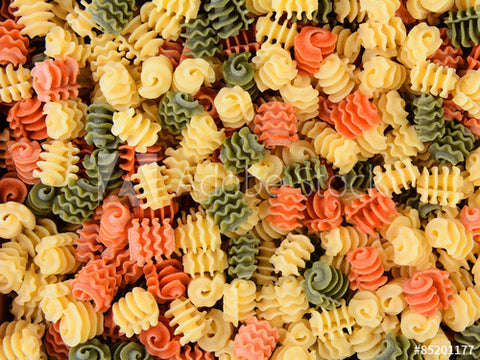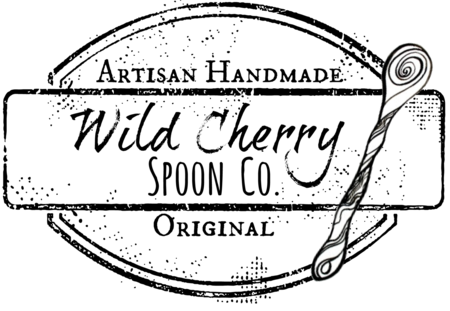As a kid, I hated boxed mac and cheese, and would only eat the noodles buttered—no orange-powder cheese sauce for me! That’s not because I didn’t like cheese; on the contrary, I loved cheese and did not suffer neon-colored cheese powder. I was also the only kid I knew who hated Goldfish snacks. I feel pretty much the same today: love cheese, hate the powdered or reconstituted stuff (white cheddar-flavored Cheez-Its being the main exception to this rule).
When I moved to Wisconsin as a teenager, I discovered real mac and cheese. Also known as baked mac and cheese, or mac and cheese casserole. It had everything the boxed stuff lacked: texture, in the form of crispy breadcrumbs; flavor, not just from using real cheese, but from seasoning with black pepper, onions, powdered garlic, or other add-ins; and cheese on top of cheese. Meaning, a good cheese sauce is not enough—there must also be shredded cheese on top, to get those satisfying strings of melted gooey goodness. Later, for an adult who showed little interest in cooking, I spent an awful long time getting my mac and cheese recipe perfect, especially during the ten years I lived in Boston, where you can get mac and cheese at restaurants, but it’s just. Not. The same.

Before you start making mac and cheese, there are some things you need to consider. For instance, my favorite pasta to use for “mac” and cheese is not macaroni. And not all breadcrumbs are created equal. That’s why I think of this as more of a philosophy than a recipe. You can find the recipe at the bottom, but if you care about good mac and cheese as I much as I do, these considerations are not to be taken lightly. So, here goes.
Pasta:
Elbow macaroni is fine, but there are pastas that will “grab” and hold onto more cheese sauce than regular old mac. Shells and cheese are great. Textured pastas like rotini also work well. But my favorite pasta for mac and cheese, when I can get my hands on it, are radiatore. They have squiggly, textured edges that grab the sauce like rotini, as well as a little “well” in the middle, similar to shells or macaroni, to hold even more delicious sauce.

Also, al dente is the only way to go. Meaning, undercook your pasta by 2 to 3 minutes so it still has a little crunch to it before you bake. It’s going to continue cooking in the oven, and soggy pasta will ruin your meal.
Breadcrumbs:
Panko-style breadcrumbs are best for a traditional mac and cheese topping. If you’re feeling more creative, it’s been trendy for a while to crush up some butter-flavored crackers on top instead. I think that’s a great way to go, although I usually opt for classic crumbs. Once, when I found myself out of Panko, I crunched up some of the aforementioned white cheddar Cheez-Its, tossed them with butter, and threw them on top of my mac before putting it in the oven. The results were delicious.
The most important consideration here is the ratio of butter to crumbs. Too much butter, and your topping will be soggy—not enough, and you might as well cover your mac with sawdust. And gods help those of you who just sprinkle it onto your casserole totally dry. For Panko, the golden ratio is 3 tablespoons of butter to one cup of breadcrumbs. You’ll need to adjust this ratio a bit for something with bigger pieces, like crushed crackers.
Cheese:
I use a lot more cheese than most recipes recommend. This is because I add cheese to taste. This is why my mac and cheese is the best. I use at least two 16-ounce packages of shredded cheese for the sauce, and almost one 16-ounce package of shredded cheese on top. You need a good cover of cheese between the mac and the breadcrumbs (or, if you prefer, mixed in with the breadcrumbs), for the caramelized, bubbly, gooey goodness mentioned above.

I typically use sharp or extra-sharp cheddar, although it’s hard to find pre-shredded extra-sharp, and sometimes I just don’t have the time to grate up an entire block of cheese. If I need a little extra oomph, I’ll use a little less cheddar, but crumble some goat cheese over the top of my mac before adding breadcrumbs. I encourage you to experiment with your favorite cheeses.
Béchamel:
I’d never even heard of béchamel for the first few years I was making mac and cheese. Instead, I heated a can of condensed cheddar soup mixed with a can of milk, then added shredded cheese as the mixture heated up. If you’ve never heard of béchamel, it is one of the “mother sauces” of French cuisine, and it’s worth learning. It’s the only one of the mother sauces I know, and since I know it, you can be sure it’s not too hard to do. It’s a lot of constant whisking, but it will make your mac and cheese creamier, and nowadays I usually opt for béchamel because it’s become second nature.
That said, if you don’t have a lot of time, there’s nothing wrong with forgoing a classic béchamel for the old can-of-soup trick. The results will still be ten times better than mac and cheese out of the box! You can read more about béchamel sauce, and how to make it, here.
Extras:
I don’t usually bother making mac and cheese if I don’t have an onion to chop, sauté and add to the sauce. Other delicious extras can include peas or broccoli, kielbasa or chicken, even crunchy bacon. Your imagination is the limit. (Can you think of anything that doesn’t go well with cheese?) Just don’t add anything that will add a lot of water or grease to your cheese sauce. So, add some (pre-cooked and drained) meat, but not a ton. And if you want to add something like pears or broccoli, cook them first to reduce the amount of liquid they’ll add.
Baked Mac and Cheese: 5 to 8 servings, depending on how hearty you want your serving to be
Prep Time: 15-20 minutesBake Time: 35 minutes
Ingredients:
1 lb pasta such as macaroni, shells, or radiatore1 onion
1 tbsp vegetable oil
2 to 4 16-oz packages of shredded cheese
¼ tsp salt
¼ tsp pepper
¼ tsp garlic powder
1 can condensed cheese soup plus 1 can (about 1 ¼-cup) whole milk OR bechamel sauce
1 cup breadcrumbs
3 tbsp butter
For Bechamel:
½ cup flour½ cup (4 tbsp) butter
2 ½ cups whole milk
1. Preheat oven to 350 degrees.
2. Chop onion and fry in vegetable oil over medium heat until onions turn clear. Set aside.
3. Start béchamel, if using. Heat milk over medium heat, stirring occasionally, until nearly boiling (or heat 2 to 3 minutes in microwave). While the milk heats, melt butter in a heavy-bottomed pot. Add flour and whisk briskly for about three minutes. Slowly pour in heated milk, about 2/3 cup at a time, while constantly whisking. As you add in the milk, sauce will initially become thick and pasty, then thin out as you add more. Continue to whisk, about 6-8 minutes, until sauce thickens again. Don’t leave the sauce to cook on its own—it will scorch or get lumpy—just keep stirring! Use the “spoon trick” to tell if it is thick enough: dip a spoon into the sauce, then draw your finger through it. If the line you drew stays clean, the sauce is done; if sauce drips down and covers the line, keep cooking!
Alternately, heat one 10.5 oz can condensed cheddar soup with one can of milk.
4. Once béchamel or soup is ready, reduce heat to low to keep warm while you start pasta. Follow directions on the package but take two to three minutes off suggested cook time; pasta should still have some crunch or chewiness before baking.
5. While pasta boils, slowly add shredded cheese to your sauce (or soup), a few handfuls at a time, and turn heat back up to medium. I use at least two 16-ounce packages, or sometimes more to taste. If you are using soup instead of béchamel, you may need to add more cheese to make a thicker sauce. Add around ¼ tsp each of salt, pepper, and powdered garlic. Taste, and add more if needed. Once the cheese sauce tastes how you want it, remove from heat and add onions.
6. When pasta is done cooking, rinse and drain, then fold into cheese mixture. Pour into 3 QT casserole dish and top with more shredded cheese. Melt 3 tbsp butter in microwave. Stir in breadcrumbs until coated, then distribute evenly on top of mac and cheese. (Note: when making mac and cheese for myself, I usually use only 1/2 a pound of pasta. For this scaled-up recipe using 1 lb. of pasta, you may need 2 casserole dishes, or a larger one.)
7. Place casserole on top of a cookie sheet in oven (to avoid cheese bubbling over onto oven rack and bottom) and bake at 350 degrees for 30-35 minutes, until breadcrumbs have browned and delicious cheesy goodness bubbles up from underneath. Enjoy as a dinner side, with a salad, or all on its own!
